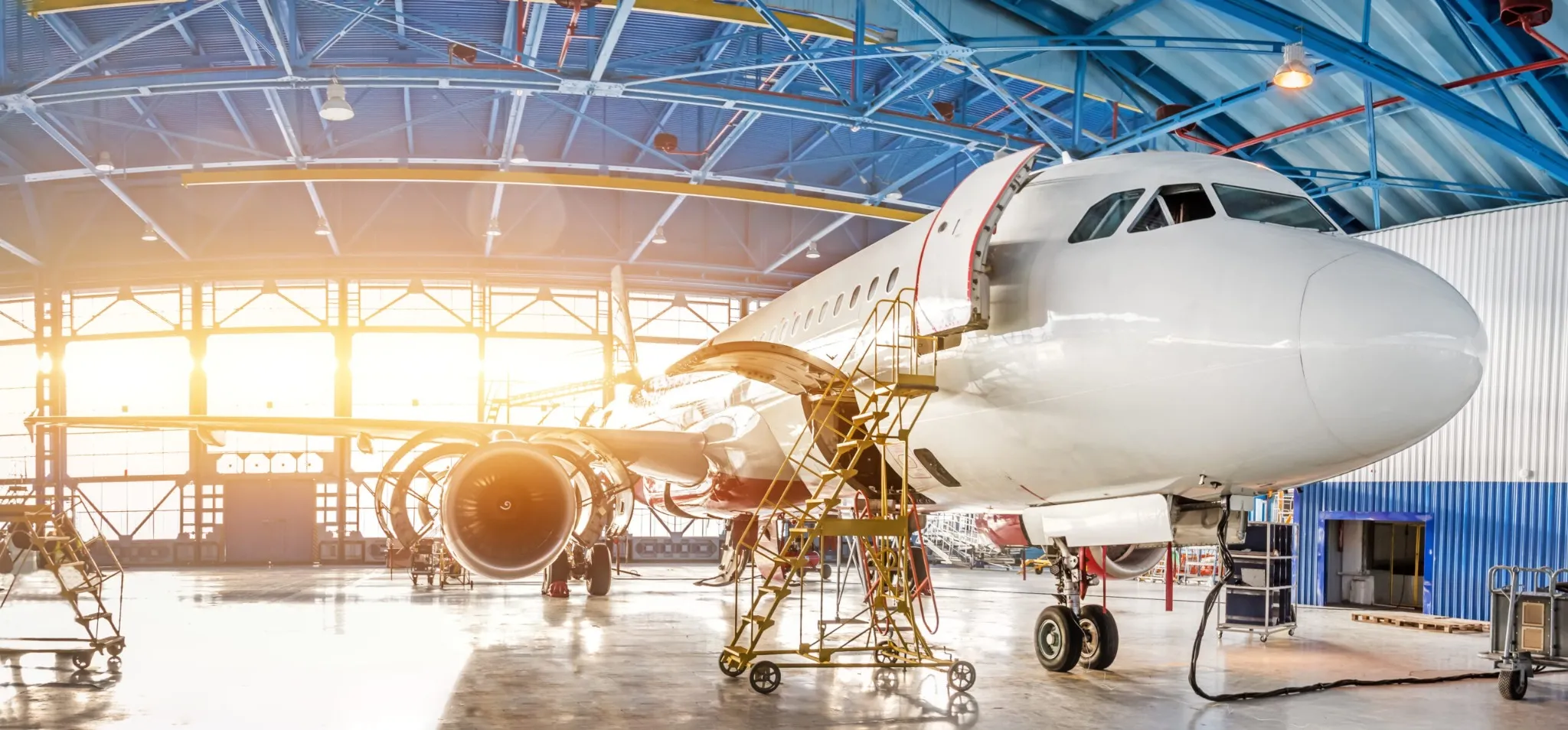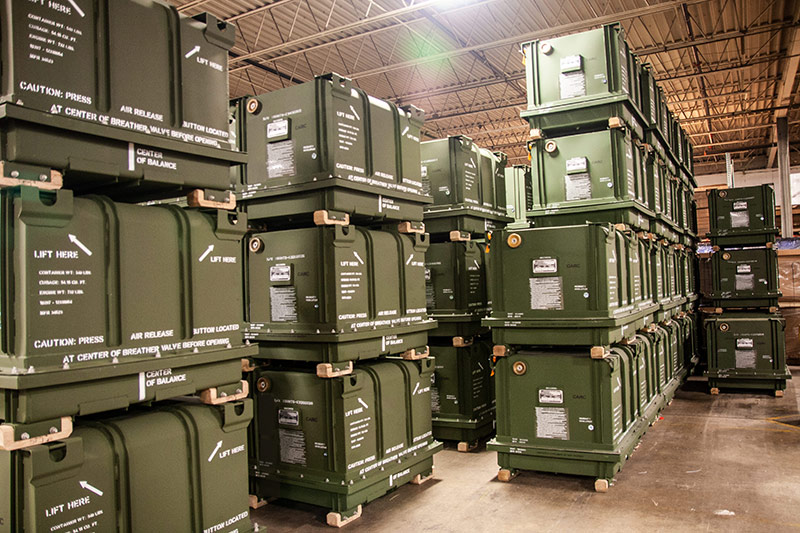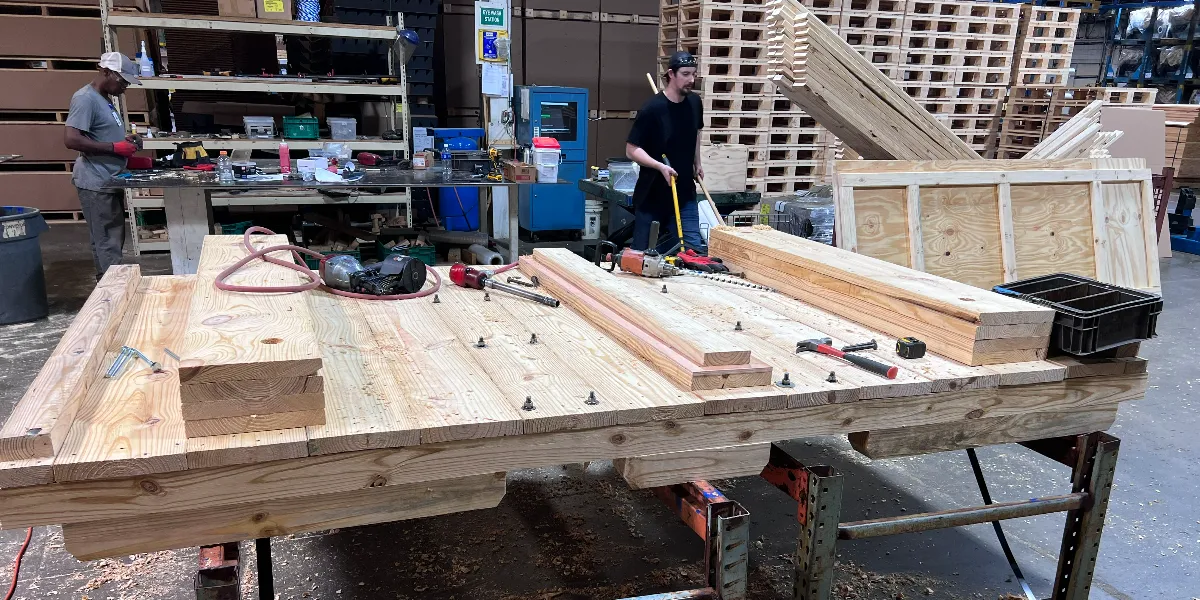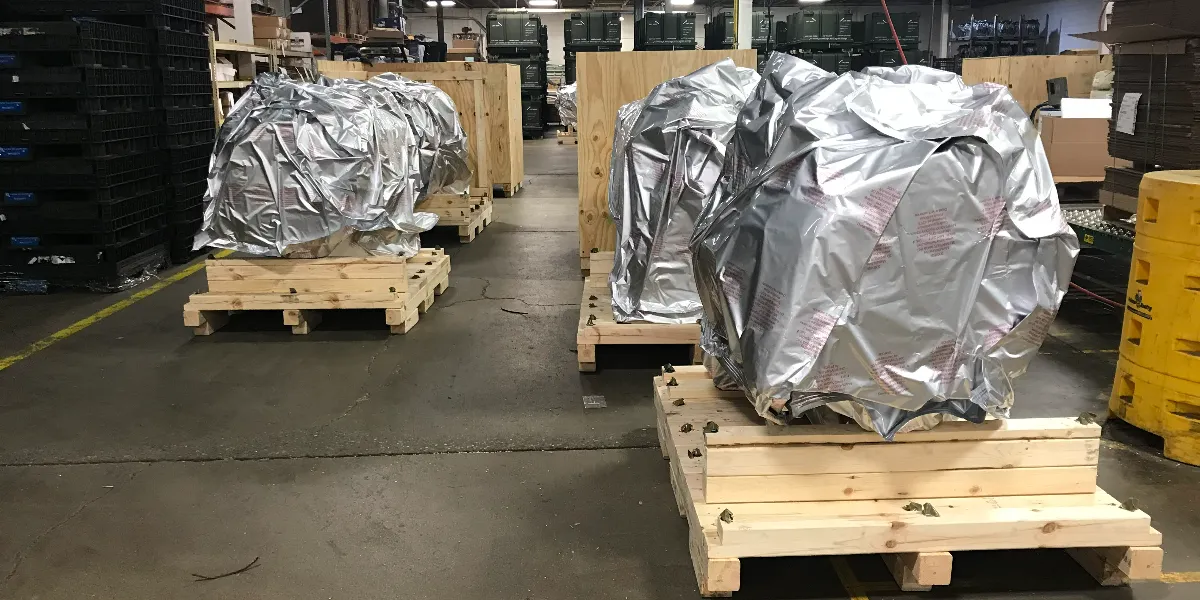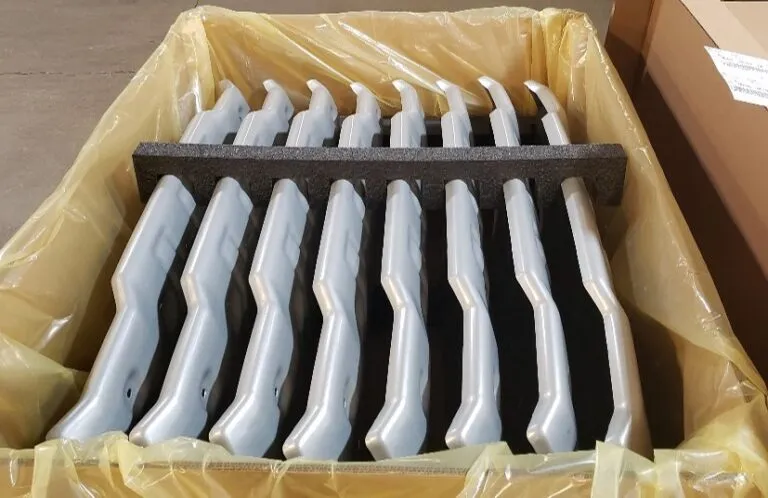The aerospace industry is characterized by its high-precision components, each critical to the overarching functionality and safety of airplanes, helicopters, and other aircraft and spacecraft assets.
The critical nature of aerospace components is what makes packaging and transportation challenging. This article will highlight the three most common challenges aerospace manufacturers face when packaging and transporting components and how these challenges can be overcome.
Regulatory Compliance
The aerospace industry is upheld to many strict packaging and transportation regulations to ensure safety and compliance.
Among these regulations are the guidelines developed by the International Air Transportation Association (IATA) and the International Civil Aviation Organization (ICAO), which concern the shipment of dangerous goods via air. The IATA and ICAO consider any articles or substances that pose a hazard to health, safety, property, or the environment as “dangerous goods.” In the aerospace industry, dangerous goods could include lithium batteries, aerosols, and gas-powered engines. The IATA and ICAO’s regulations classify the levels of dangerous goods and help manufacturers understand how to label and pack these items.
Furthermore, certain aerospace components developed for the military, like missiles and military aircraft components, must follow MIL-spec packaging guidelines. Environmentally sensitive components must also be handled carefully and packaged with specialty material, like anti-static bags or temperature-controlled packaging, to ensure compliance and reduce potential damage during transportation.
Solution
If you regularly manufacture components for the aerospace industry, the best way to ensure compliance is to work with an experienced packaging company. Companies specializing in military and aerospace packaging possess a deep understanding of the complex regulatory landscape, including the guidelines enforced by the IATA, ICAO, and Department of Defense.
Diverse Component Sizes & Environmental Sensitivities
The aerospace industry relies on many components, ranging from colossal fuselage sections and engine components to small and delicate electronic devices and sensors. Each component requires a unique packaging solution that not only ensures exceptional protection from external hazards but also complies with the stringent regulatory standards we discussed earlier.
While larger components, like wings, fuselages, and engines, require robust and sturdy packaging, smaller parts need compact, secure packaging to prevent movement during transportation.
Additionally, many aerospace components are sensitive to extreme temperatures, humidity, vibration, and shock. Electronic components, for example, are susceptible to electrostatic discharge, while metallic parts might corrode when exposed to moisture. So, many of these components must be packaged with temperature-controlled materials to preserve the components’ integrity during transportation.
Solution
Developing custom packaging is the best solution for handling diverse component sizes. Packaging specifically designed for different components means that each part will snugly fit into the packaging, minimizing movement during transportation and providing extra protection against shocks and vibrations. Custom packaging can also include anti-static materials for electronic components and corrosion-inhibitive materials for metallic parts.
A third-party packaging company can design and construct specialized packaging for your aerospace components, disassemble and reassemble large components, and kit smaller items together to help you save money.
Material Selection
Material selection also presents a significant challenge to the aerospace industry. All types of materials, including wood, plastic, and metal, can be used to package components. The key to selecting the right packaging material is to thoroughly understand the properties of the component being packaged and transported, its sensitivity to environmental conditions, and the potential hazards it could create during transportation.
For example, anti-static foam is crucial for packaging electronic components and provides cushioning against physical shocks and vibrations. And wooden crating is great for larger, heavier aerospace components like engine parts because it creates a sturdy shell, protecting encased components from impact and environmental conditions.
Solution
Always perform a thorough component analysis before selecting a material. First, assess the component’s physical attributes, including its dimensions, weight, and structural integrity. Understanding the size and weight helps to understand which packaging materials can withstand the load. Examples of great load-bearing materials include wooden crates, metal containers, plastic containers, and corrugated fiberboard.
Next, assess the item’s sensitivity. How will it react to changes in the environment, including temperature, humidity, and electrostatic discharge? This assessment will help you decide if a protective barrier is needed to reduce reactions to changes in the component’s environment. Common materials used to protect aerospace components from changes in environmental conditions include:
- Barrier Bags: These are made from multiple layers of aluminum, foil, and other materials. The primary purpose is to provide a barrier against moisture and gas.
- Anti-Static Foams, Films, & Bags: Anti-static material protects electronics from electrostatic discharge.
- Desiccants: Desiccants are needed when shipping moisture-sensitive components, as they absorb moisture and keep the interior of the packaging dry.
- Corrosion-Inhibitive Materials: VCI papers and films protect metal components from corrosion.
- Insulative Materials & Thermal Blankets: Insulation and/or thermal blankets may be needed to create a stable temperature inside the packaging—this is particularly important for transporting components sensitive to temperature fluctuations.
- Shock & Vibration Damping Materials: Use foams, cushioning materials, and damping compounds to protect components sensitive to impact, shock, and vibration.
- Vacuum Packaging: Vacuum packaging provides a barrier to oxygen and moisture and may be needed when shipping metal components or other parts susceptible to corrosion.
Lastly, you’ll want to check how the component may be affected by shocks, vibrations, and impacts during transportation. If the item is particularly fragile, you’ll need to ensure you cushion it and ship it in a rigid container made from wood, metal, or plastic.
Contact Export Corporation for Custom Aerospace Packaging
Don’t take any risks—if you need help packaging your sensitive, large, fragile, and/or dangerous components, turn to an experienced packaging company like Export Corporation. We’ve been designing and developing custom packaging solutions for aerospace, military, commercial, and automotive manufacturers for over seven decades.
Our complete packaging capabilities include assembly and disassembly, bagging, labeling, repackaging, preservation, inventory management, decontenting, and more. Please contact us today to learn more about our capabilities or to schedule a project consultation.
